What Is Active Stretching and Why It's Important To Do After Your Exercises

After finishing a killer leg day or hitting a PR on the treadmill, it’s normal to want to reward yourself by hitting up the local protein shake shop for a post-workout treat. However, there is something that needs to happen in between the end of your workout and this reward for a job well done.
Stretching is an essential element of your cooldown routine that often goes overlooked. While many people know to stretch before a workout, a lot of people don’t tend to incorporate it into their routine after their workout. And that’s a problem.
When you work out, your body converts glucose into energy in order to keep yourself going. But when that happens, it releases something called lactic acid. This can build up in your muscles and cause soreness, stiffness, and overall feelings of discomfort.
Stretching helps to break up lactic acid and keep you feeling good the next day. This helps to improve your flexibility and reduce the risk of injury. Plus, it lets you go just as hard day after day without needing to rest as much.
Static stretches involve you holding a position for a period of time (think hamstring stretches on the floor). But active stretching takes things a step further and adds some resistance to the mix. It’s the perfect stretch to do after your workout to loosen multiple muscles at one time.
Let’s get into the specifics as far as how active stretching can completely amplify your typical workout routine.
Understanding Active Stretching
Static stretching involves flexing a muscle to its farthest point and maintaining that position. It usually focuses on a single muscle at a time. Laying on the floor, extending one leg, and reaching towards your toes is an example of a static stretch.
Active stretching is a form of static stretching, except it involves the active contracting of a muscle (the agonist) as a way to stretch the opposing muscle (the antagonist). No external force is used besides your body weight.
Holding these types of stretches can be insanely difficult, so you usually don’t need to hold them for more than 15 seconds to get the full effect.
Active stretching after a workout is important because it can increase your flexibility and reduce tension in your muscles. This can enhance your performance the next time you go to work out, as it can lessen the risk of soreness and tightness.
How To Do Active Stretches
Doing an active stretch really isn’t too difficult, so you can easily incorporate it into your pre and post-workout regimen. Plus, it doesn’t require any special equipment to complete, so you can put your Gorilla Bow to the side for now.
The first thing you need to do is choose a target muscle. While it’s important to stretch your whole body, you can focus on certain areas that were most activated during your workout. So if you did a lot of push-ups, chest presses, or tricep extensions, you probably want to give your shoulders and triceps a bit more love than other areas.
Next, flex the agonist muscle. That means you’re flexing the muscle on the opposite side of the muscle being stretched. For example, a tricep stretch where you bend your left elbow and slowly try to reach down your back with your left hand will contract the bicep in order to extend the tricep.
It’s important to hold the pose for about ten seconds or until you really feel a stretching sensation in the target muscle. That means it’s working. Just make sure you don’t overextend yourself; if you begin to feel any pain, stop.
Finally, repeat on the opposite side of the body to help prevent muscle imbalances.
Our Favorite Active Stretches
Don’t know where to start? No problem. We’ve compiled a few of your favorites for you to try out during your next cooldown.
Active Hamstring Stretch
Your hamstring is the muscle in the back of your thigh. It’s important to stretch this muscle after running or doing leg-based strength exercises, like deadlifts.
In an active hamstring stretch, you contract the hip flexors and your core in order to feel a stretch in your hamstring. It goes like this:
- Lie on your back.
- Lift one leg straight toward the ceiling until you feel tension in your hamstring. Hold for ten to 15 seconds, trying not to bend your knee.
- Slowly lower to the starting position and repeat with the other leg.
Active Chest Stretch
The chest stretch will help flex the pectoral muscles, but it will also give some love to your biceps. Most of the muscles in your back act as the antagonists here, as they’re the ones contracting so that you can flex your pecs.
To do an active chest stretch:
- Stand up nice and tall. Reach both of your arms out 90 degrees with your elbows straight. Turn your palms forward.
- Open the arms as wide as possible so that they’ve extended behind the body until you feel a stretch across your chest and front of your arms.
- Hold for ten to 15 seconds.
Active Obliques Stretch
Your obliques are the muscles on the sides of your abdomen. When you do this oblique stretch, your abdominal muscles (rectus abdominis) contract to allow you to feel the flexion of your oblique.
To do an active oblique stretch or a side bend:
- Stand straight.
- Lift your left arm straight above your head. Lean your body to the right until you feel a stretch on the left oblique. Hold for ten to 15 seconds, reaching your left arm out over your head.
- Slowly return to the starting position and repeat on the other side of the body.
How Is Active Stretching Different from Other Stretches?
There are many different types of stretches, and they each have their own sets of benefits and drawbacks. Some people confuse active stretching for dynamic stretching because a dynamic stretch does require you to be active.
The main difference is that an active stretch maintains a static position, whereas a dynamic stretch involves a gentle, fluid movement. An example of a dynamic stretch is arm circles, where you rotate your shoulder blades slowly to flex your shoulder joint and your arm muscles.
Dynamic stretches are really helpful for increasing your flexibility. They can also be helpful before an aerobic workout because they can help increase your core temperature.
Also, when you do an active stretch, it’s essential that you hold the muscle still. If you bounce the muscle back and forth or up and down, it turns into a ballistic stretch. These are uncontrolled and spastic movements that are actually not recommended for most people.
Can You Do Active Stretches Before a Workout?
We’ve been talking a lot about how great active stretches are when you’re all done with your workout. But what about before you even get started?
You can absolutely do active stretches before a workout. Since they can help to extend your joints and muscles in ways that will help to loosen them up, these types of stretches are amazing ways to boost your performance before you even get started.
Just make sure you’re supplementing your active stretches with some dynamic stretches as well as some healthy pre-workout snacks so that you don’t burn out.
Last Steps
Active stretching is a form of static stretching where you contract an agonist muscle in order to flex an antagonist muscle. It’s great for post-workout cooldowns as they let you increase your flexibility while also breaking up the build-up of lactic acid.
Active stretches require no equipment, and the only resistance comes from using your body weight. They are much better alternatives to ballistic stretches that use uncontrolled bouncing movements. Active stretches are best when supplemented with dynamic workouts that incorporate gentle movements.
You can perform active stretches before and after a workout as part of your warmup and cool down, respectively.
There are a lot more fitness tips where these came from. Become a part of Gorilla Bow’s All-Access Membership to gain access to live and on-demand workout classes that show you how to take your Gorilla Bow to brand new heights. It will make you more flexible, both in your arsenal of skills as well as your muscular mobility.
Sources:
Why Does Lactic Acid Build Up in Muscles? And Why Does It Cause Soreness? | Scientific American
The importance of stretching | Harvard Health Publishing
11.1 Describe the roles of agonists, antagonists and synergists | Oregon State University


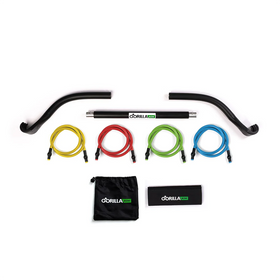
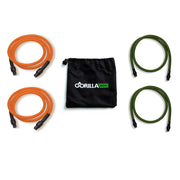
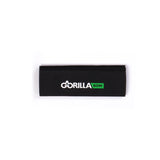
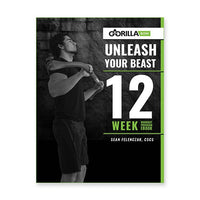
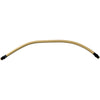



Leave a comment